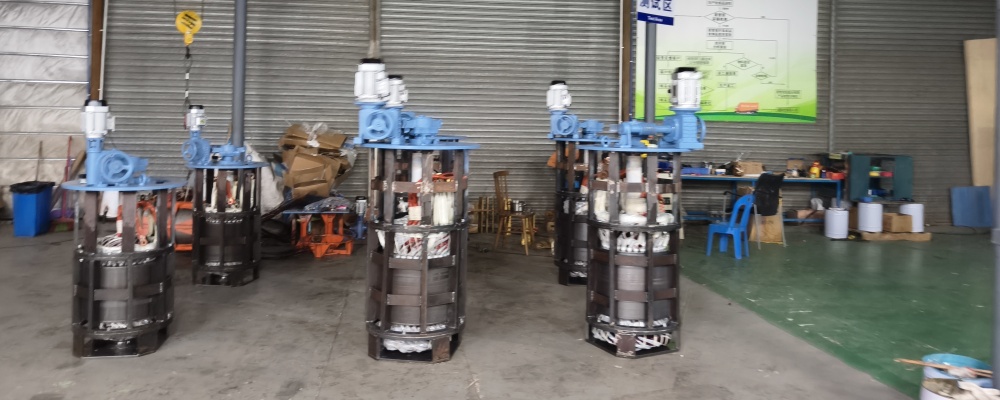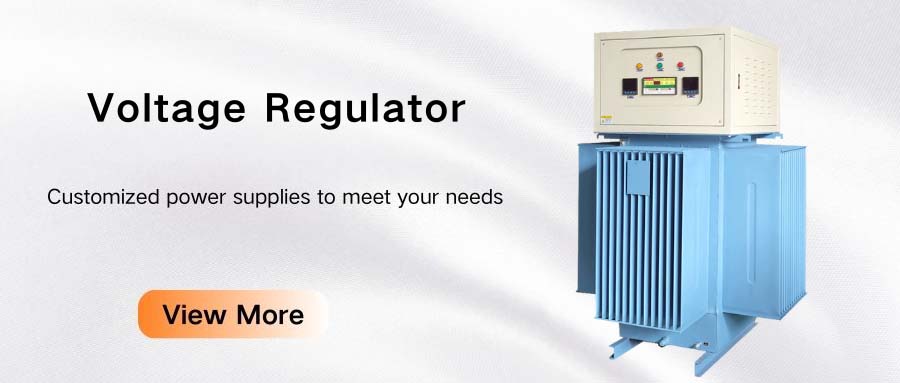The voltage regulator, as the name suggests, is a device that stabilizes the circuit voltage. In order to enhance everyone's understanding of the voltage regulator, this article will introduce the situation of the voltage regulator temperature being too high and the new challenges and new demands that the voltage regulator faces today.
What happens if the voltage regulator temperature is too high
The voltage regulatoris a device that stabilizes the output voltage. The voltage regulator consists of a voltage regulating circuit, a control circuit, and a servo motor. When the input voltage or load changes, the control circuit samples, compares, and amplifies, and then drives the servo motor to rotate, so that the position of the voltage regulator carbon brush changes, and the output voltage is kept stable by automatically adjusting the coil turns ratio. When the voltage regulator temperature is too high, the following effects may occur:
1. Reduce the efficiency of the voltage regulator: The working efficiency of the voltage regulator may be reduced due to excessive temperature. High temperature can cause damage or failure of the electronic components or devices inside the voltage regulator, affecting the precise voltage regulation ability of the voltage regulator.
2. Shorten the life of the voltage regulator: High temperature will accelerate the aging and damage of the electronic components inside the voltage regulator, thereby shortening the life of the voltage regulator. The reliability and stability of the voltage regulator may be reduced when it is in a high temperature environment for a long time.
3. Overload or overheat protection occurs: When the temperature of the voltage regulator is too high, the internal protection mechanism may be triggered, causing the voltage regulator to automatically enter the overload or overheat protection mode. This will temporarily stop the voltage regulator from working to protect it from overheating and damage.
4. Unable to stabilize the output voltage: The voltage regulator may not be able to stably output the required fixed voltage in a high temperature environment. Excessive temperature may cause the output voltage to fluctuate or be affected by temperature effects, making the output voltage unstable.
To avoid problems caused by excessive temperature of the voltage regulator, the following measures can be considered
1. Provide sufficient heat dissipation: Ensure that the voltage regulator can fully dissipate heat, and use heat sinks, fans or other heat dissipation devices to help the voltage regulator dissipate heat and reduce the temperature.
2. Control the ambient temperature: Place the voltage regulator at a suitable ambient temperature, away from high temperature sources and enclosed spaces to reduce heat accumulation and temperature rise.
3. Choose an efficient voltage regulator: Choose a low-power and high-efficiency voltage regulator to reduce the loss of energy converted into heat, thereby reducing the temperature.
4. Rationally design the voltage regulator circuit: Rationally design the voltage regulator circuit and layout to reduce the power consumption concentrated in the local area, reduce excessive load and other factors that cause the voltage regulator to overheat.
What new demands are facing the power regulator?
As one of the core components of electronic equipment, the power regulator plays a vital role in ensuring the stable operation of the circuit system. However, with the rapid development of science and technology and the increasing complexity of electronic equipment, power regulators are also facing many challenges and new demands.
First of all, the power regulator must meet the requirements of high efficiency. In today's society that pursues energy conservation and environmental protection, improving the conversion efficiency of power regulators and reducing energy waste has become an industry consensus. To this end, scientific researchers continue to develop new power supply voltage regulation technologies, and improve the efficiency of power regulators by optimizing circuit design, improving manufacturing processes and other means.
Secondly, the power regulator needs to have stronger stability and reliability. In a complex circuit system, the power regulator must be able to withstand various external interferences and fluctuations to maintain the stability of the output voltage. At the same time, as the use time of electronic devices increases, the reliability of power regulators is also facing severe tests. Therefore, manufacturers need to strictly control product quality, use high-quality raw materials and advanced production processes to ensure the stability and reliability of power regulators.
In addition, power regulators also need to have a wider range of applications. With the rapid development of technologies such as the Internet of Things and artificial intelligence, various new electronic devices are emerging in an endless stream, which puts higher requirements on the performance of power regulators. In order to meet the needs of different devices, power regulators need to have a variety of input voltage ranges, output voltage adjustment methods and protection functions to adapt to various complex application scenarios.
In summary, as an important part of electronic equipment, power regulators are facing many challenges and new demands. We need to continuously develop new technologies, optimize product design, and improve product quality to meet the increasingly complex and diversified needs of electronic equipment.
IDEALPLUISNG Power Expert:
We focus on the research and development, sales and services in the fields of DC-DC power modules, AC-DC rectifier modules, DC-AC inverters, AC power supplies, DC power supplies, LED power supplies, chargers, rectifier systems, etc., providing personalized, efficient, reliable and cost-effective power solutions for all walks of life.
Thank you for considering our services.







